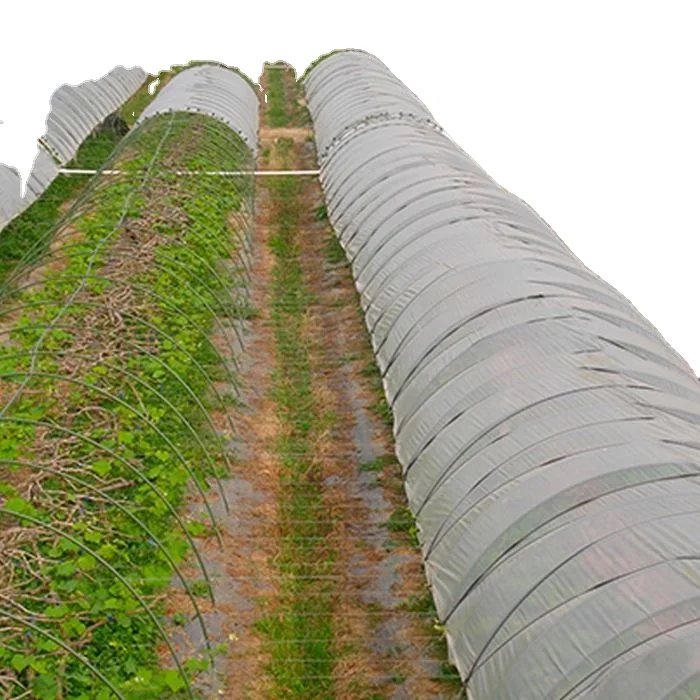The Specifications Of Non-Woven Fabric And Its Uses In Agriculture
From the very beginning of the business of petrochemicals, non-woven fabric has been around. Non-woven fabrics were initially used to increase their bulk and softness in packaging as a covering, cover, filler, and other applications. Non-woven fabrics have widened their use to many different fields such as commerce, civil engineering treatment as well as environmental and agricultural engineering. Its existence is evident everywhere, especially in its initial applications in the field of agriculture. Non-woven fabrics are made up of similar substances made of long and short fibers. They are linked using heat or chemical treatment. In general, non-woven fabrics are not as durable, but less brittle than woven materials. Non-woven fabrics are utilized in many sectors. There are a variety of non-woven materials. They are easier to produce than weaved fabrics, and there is a growing market for non-woven fabrics. Follow this pp agricultural nonwoven fabric for more information.
Non-Woven Industries Development. Nonwoven fabric is produced by the petrochemical industry after the development of plastic cloth (film). It is lighter than plastic fabrics and has better air circulation. It is commonly used in medical, sanitary, and filter products, as well as in engineering applications, such as disposable napkins for sanitary use, facial towels and filters. Non-woven fabrics shield vegetable crops from cold damage. The production process of non-woven fabrics differs from that of plastic film, however the fundamental raw materials are nearly the same. It comprises PVC (polyvinyl chloride), PE (polyethylene), EVA (Ethylene Vinyl Acetate copolymer), PVA (polyvinyl alcohol), and so on. It is possible to make a thin film of traditional plastic by melting it, then inflating. In essence, the film is continuous; the material is able to stretch indefinitely. The surface of the film has no pores. The film is inert and stops any exchange or movement of molecules. Following the expansion of the textile industry artificial chemical fibers made from the above-mentioned raw materials replaced many natural plant fibers, and became the darling of the textile industry. Chemical fibers can be transformed into cloth by traditional warp and weave weaving. The non-woven fabric is created by interconnecting fibers in the same plane, at various angles across all directions. It is not possible to utilize traditional warp and weave methods. This material has better material properties than traditional weaved fabrics. It can also be produced in one process starting from raw materials and ending with final products. This is a better alternative to weaving that calls for drawing in fibers. The industry of apparel has been using non-woven fabrics in large numbers in recent times. Thanks to advances in material science, and the development and implementation of production technology nonwoven materials have become more diverse and are employed more frequently. You can find the various materials and products in every day life. Non-woven textiles are becoming increasingly well-known in the agricultural sector due to their simplicity of production, lightweight, flexibility with low costs, and a variety of applications. Look at this non woven weed fabric for recommendations.

Non-woven textiles for use in agriculture. Applications of Non-Woven fabrics used in agriculture. Non-woven fabrics were first used in Europe to protect carrots from early harvesting. Additionally, to prevent whiteflies and tomato leaf viruses, non-woven fabrics were first introduced to Europe to the agriculture industry in 1978. Non-woven fabrics used in the United States to mulch cantaloupes. Sweet peppers. tomatoes. Root vegetables. Carrots. Radishes. Cabbage. Lettuce. It is mostly employed for heat preservation, promoting early harvesting and for pest control. Non-woven materials have the ability to raise soil temperature and retain water well which is why they are used for grass-proof mats. Short fibers are also utilized in the production of water-absorbing blankets that are placed on nursery beds to ensure that the roots can completely absorb any water. They can be used to make turf or directly used as lawns for gardens. They can be utilized as planting bags to shield large woody plants like gardens or fruit trees, and retain moisture. In Taiwan, in addition to the mentioned functions, non-woven fabrics are utilized in crop protection. They are also used for controlling the environmental impact of large greenhouses in order to reduce energy consumption. Canopy curtains are double-layered , and help reduce heat absorption and radiation in the evening. In the beginning, TAVIK non-woven spun-bonded TAVIK fabrics with high density were utilized to shade and protect cauliflower bulbs. Its superior shading capacity as well as its low thermal conductivity and ease of recyclability made it a favorite choice for farmers. It was later used for the preservation of leaf vegetables as well as their insect-proof cultivation. Then it was utilized for shading, heating and protect fruit trees and pineapples. However, due to Taiwan's unique climate and ecology, the development of the non-woven sector has been slow. Non-woven fabric makers from Taiwan continue to work on developing non-woven technologies. They're focusing on the absorption of water and air permeability of non-woven fabrics. It is being used to preserve and store agricultural products. Check out this agriculture non woven fabric manufacturer for recommendations.
